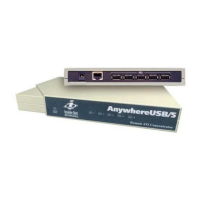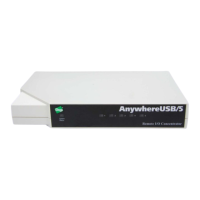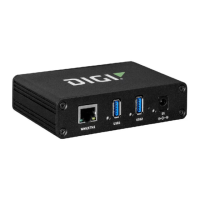Virtual Private Networks (VPN) OpenVPN
AnywhereUSB® Plus User Guide
608
n
OpenVPN managed—The AnywhereUSB Plus device creates the interface and then uses its
standard configuration to set up the connection (for example, its standard DHCP server
configuration).
n
Device only—IP addressing is controlled by the system, not by OpenVPN.
Additional OpenVPN information
For more information on OpenVPN, see these resources:
Bridging vs. routing
OpenVPN/Routing
Configure an OpenVPN server
Required configuration items
n
Enable the OpenVPN server.
The OpenVPN server is enabled by default.
n
The mode used by the OpenVPN server, one of:
l
TUN (OpenVPN managed)—Also known as routing mode. Each OpenVPN client is assigned
a different IP subnet from the OpenVPN server and other OpenVPN clients. OpenVPN
clients use Network Address Translation (NAT) to route traffic from devices connected on
its LAN interfaces to the OpenVPN server.
l
TAP - OpenVPN managed—Also know as bridging mode. A more advanced
implementation of OpenVPN. The AnywhereUSB Plus device creates an OpenVPN interface
and uses standard interface configuration (for example, a standard DHCP server
configuration).
l
TAP - Device only—An alternate form of OpenVPN bridging mode, in which the device,
rather than OpenVPN, controls the interface configuration. If this method is is, the
OpenVPN server must be included as a device in either an interface or a bridge.
n
The firewall zone to be used by the OpenVPN server.
n
The IP network and subnet mask of the OpenVPN server.
n
The server's Certificate authority (CA) certificate, and public, private and Diffie-Hellman (DH)
keys.
n
An OpenVPN authentication group and an OpenVPN user.
n
Determine the method of certificate management:
l
Certificates managed by the server.
l
Certificates created externally and added to the server.
n
If certificates are created and added to the server, determine the level of authentication:
l
Certificate authentication only.
l
Username and password authentication only.
l
Certificate and username and password authentication.
If username and password authentication is used, you must create an OpenVPN authentication
group and user. See Configure an OpenVPN Authentication Group and User for instructions.
